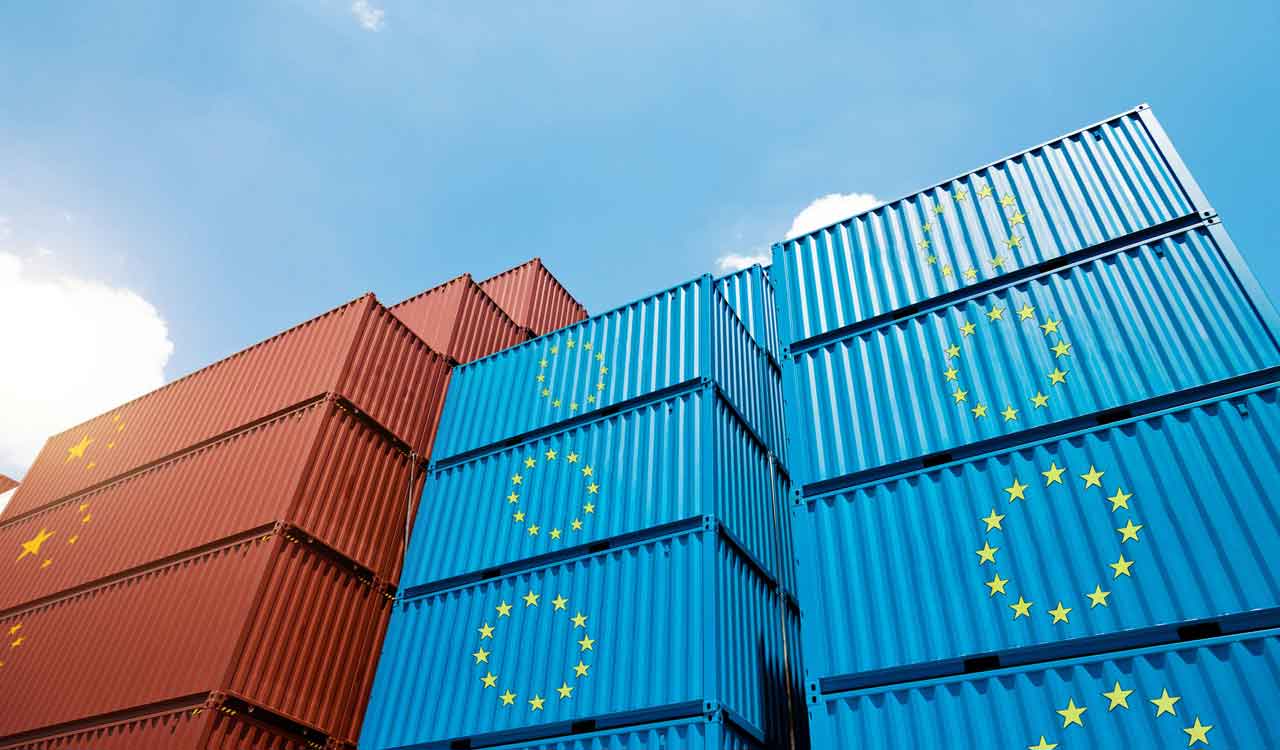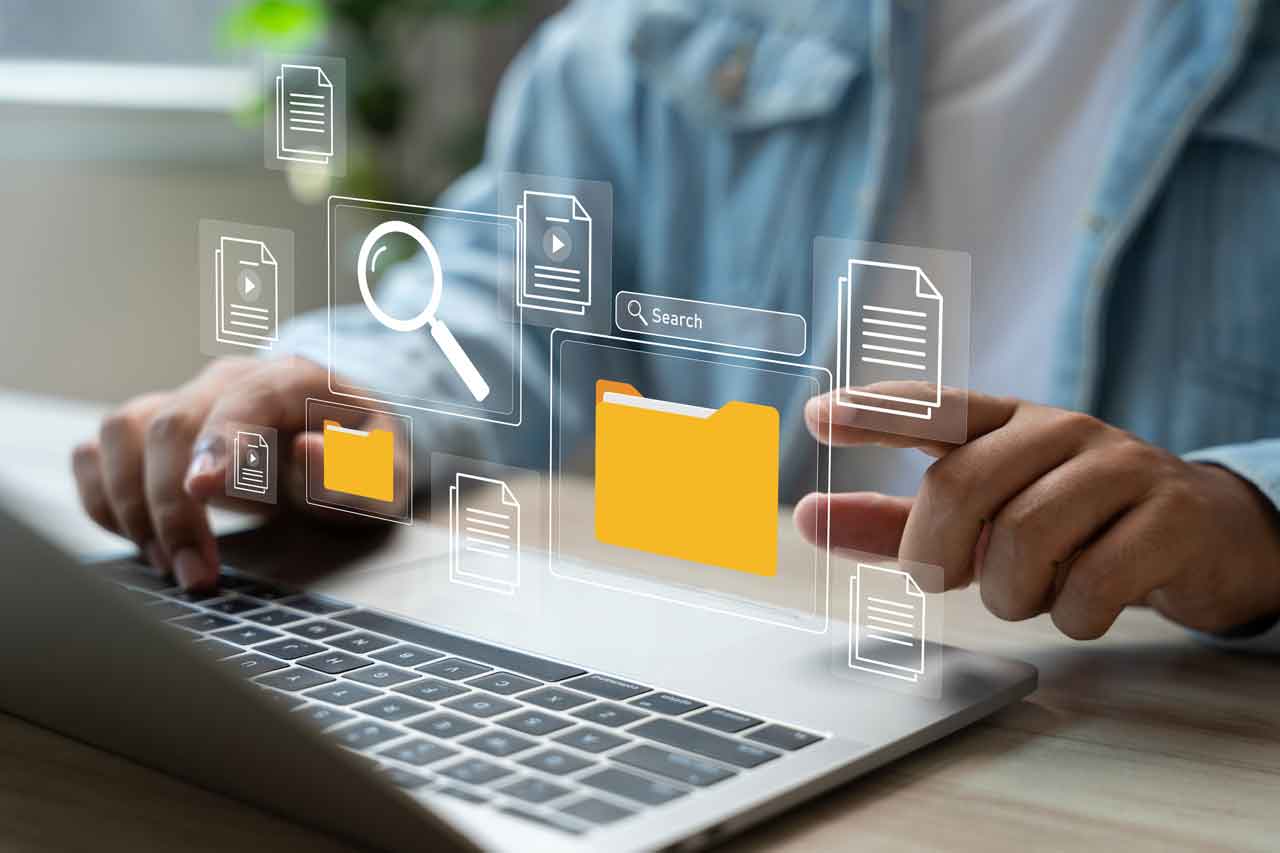EUROPE’S PATH INTO DIGITAL LOGISTICS
Getting ready for eFTI

Status quo
What is eFTI?
eFTI requires authorities in the EU member states to accept transport information for all modes of transport in electronic form. For companies, participation in eFTI is initially voluntary. But joining is worthwhile, as it means less administrative burden and accelerated processes.
The regulation
The technical framework

Markus Sandbrink
»At Rhenus, we view eFTI as a positive step forward. As the industry moves steadily toward full digitalization, we believe eFTI should be an integral part of a truly end-to-end digital strategy. Regulations like eFTI are essential to building more reliable and efficient supply chains.«

Barry Van Leuven
Managing Director, Pionira
»At Pionira we see eFTI as a central driver of digital transformation in the logistics sector. eFTI is not just a regulatory framework, but also a lever to strengthen collaboration, drive innovation, and accelerate the adoption of digital transport documents across Europe. Clear and harmonised rules throughout Europe are crucial to building trust and ensuring smooth implementation.«
NEW PERSPECTIVES
Where does eFTI stand today?
In the eFTI4EU, eFTI4ALL und eFTI4LIVE projects, the EU Commission has initiated the implementation of the eFTI architecture. The goal is to establish a proof of concept for the technical framework, which also includes the development of initial components. However, the success of the eFTI Regulation will crucially depend on these components meeting practical requirements. Against this backdrop, it is essential that the perspectives of companies are seen and heard. Industry must have the opportunity to examine, adapt, and further develop the results – and it must also utilize them. This is the only way to develop lean, practical solutions – and thus an interoperable system that works across Europe.

One standard for all companies
The Open Logistics Foundation promotes a joint approach among companies and collaboratively developed components on the companies’ eFTI platforms. This provides all companies with fast access and simplifies the connection to eFTI.
Companies thus have the opportunity – as with other Foundation projects – to contribute to the development of such a solution and help shape shared components. Collaboration reduces effort and costs for companies. Furthermore, the solution can be easily integrated into existing systems and platforms. For example, the eFTI data model and communication with the eFTI gates, as well as authentication and certification, are suitable for joint open source development.

A unified solution for all states
With regard to the eFTI gates, the Open Logistics Foundation is committed to an open, joint and interoperable solution based on open source that is viable across all member states.

Jens Leveling
Technology Advisor, Open Logistics Foundation

David Saive
Legal Product Owner, Open Logistics Foundation
»When implementing digital solutions for transport documents, we at the Open Logistics Foundation make sure that the code is always legally compliant.«
TWO TOOLS, ONE GOAL
eFTI vs. eCMR – what is the difference?
Currently, companies are often still uncertain about the difference between the eFTI Regulation and the digital consignment note (eCMR). The confusion stems from, among other things, the fact that authorities sometimes require the eCMR during road freight checks – even though, strictly speaking, it is a purely private law document. However, the eCMR is suitable as proof for inspections under public law, as it contains all the essential details of transport that authorities need.
The digital consignment note is a civil law document between the companies involved in transport (B2B).
eFTI provides the legal framework for data exchange with authorities (B2A).

Which transport documents are now on the agenda
With the digitisation of further transport documents, eFTI will continue to take shape – to the benefit of logistics. From the Open Logistic Foundation’s Working Group “Electronic Transport Documents”, an industry-ready open source solution is already available with the OLF-eCMR. The task now is to create standards for all modes of transport – some of which are already being addressed:
Companies always have the opportunity to launch or support corresponding projects for the digitisation of further transport documents within the Open Logistics Foundation: Let’s join forces for eFTI.

FAQs
What you need to know about eFTI in a nutshell
The new EU-wide regulation for the digital exchange of transport information: learn more about the implementation, application and potential of the eFTI Regulation.
How important is the eFTI Regulation for logistics in Europe?
The eFTI Regulation provides the long-missing legal framework for the digital transmission of information on the transport of goodsby road, rail, air and inland waterways within the EU. It is intended to digitalise and standardise the previously fragmenteddocumentation in cross-border transport. So far, each of the 27 EU countries can require different transport documents and proof.
What advantages does the eFTI Regulation offer companies?
A key benefit lies in the harmonisation of the legal framework within the EU: the Regulation promotes a uniform understanding and interpretation of legal requirements in the transport of goods. Today there are still differences in which proof is accepted and how, which leads to considerable inefficiencies in cross-border transport. Logistics companies also benefit directly from official inspections: eFTI enables all relevant data on the vehicle, cargo, transport route and legal evidence to be available digitally and in a standardised way. This significantly reduces the time required for inspections – from often 30 to 45 minutes today to just a few minutes. At the same time, the transparency and reliability of the transmitted information increases.
Where is the interface between the Open Logistics Foundation and eFTI?
The Open Logistics Foundation firmly believes that the digitalisation of transport will only succeed if solutions and systems are interoperable. Joint development is the best, if not the only, basis for this. The Open Logistics Foundation has already demonstrated this in many other digitalisation projects: it brings relevant stakeholders to the table to define open, standardised building blocks and interfaces – so that they work in practice and can be used by everyone. One successful example is the solution for digitalising the consignment note CMR, the OLF-eCMR. A particular strength of the Foundation lies not only in development, but also in operation: it creates structures for the continuous maintenance, further development, and updating of jointly developed solutions – so that they remain permanently usable and up-to-date.
